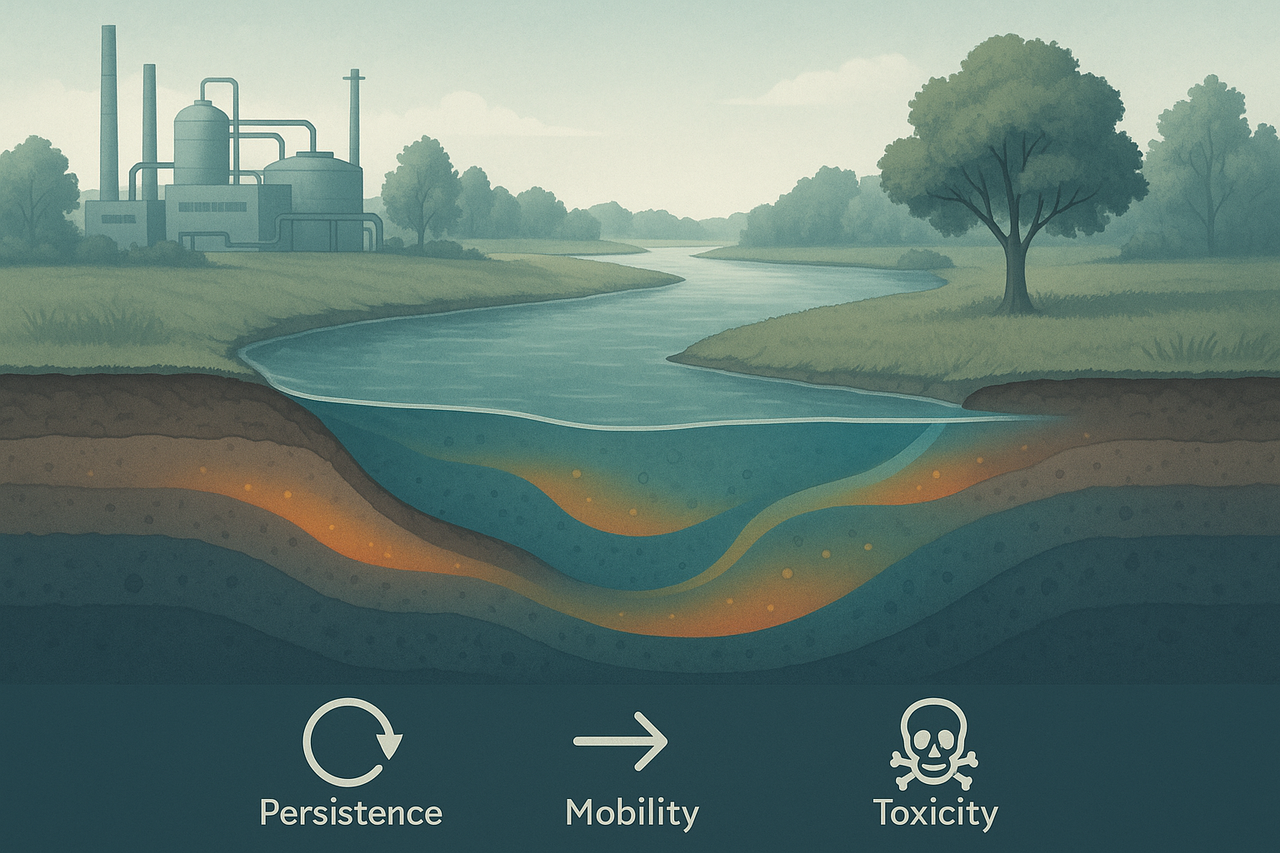
Understanding Europe’s 2023 update to chemical persistence classification
A new class of concerns has entered the chemical risk conversation: PMT (Persistent, Mobile, Toxic) and vPvM (Very Persistent, Very Mobile).
These are not just scientific buzzwords, since 2023, they have become official hazard classes under the EU CLP Regulation (via Delegated Regulation (EU) 2023/707).
For SHEQ managers, this means new labels, new data requirements, and a broader view of environmental risk. It looks not only at toxicity but also at how far a substance can travel once it is released.
Historically, hazard classification focused on toxicity and bioaccumulation.
But scientists have long recognized another pathway: some substances do not build up in organisms, yet they travel easily through groundwater and surface water, spreading far from where they were released.
These chemicals can reach drinking water sources, resist degradation for years, and are nearly impossible to remove with standard treatment technologies.
That is why PMT (Persistent, Mobile, Toxic) and vPvM (Very Persistent, Very Mobile) have been added to CLP, to ensure these substances are identified, labeled, and managed as environmental hazards in their own right.
These classes describe substances that:
The “very” versions (vPvM) indicate even greater persistence and mobility, meaning the substance can travel farther, last longer, and create long-term contamination even at trace levels.
| Property | Indicator | PMT Threshold | vPvM Threshold |
|---|---|---|---|
| Persistence (P/vP) | Half-life in water, soil, or sediment | > 40 / 60 days in water, > 120 / 180 days in soil/sediment | Higher thresholds indicate “very persistent” |
| Mobility (M/vM) | Log Koc (organic carbon partition coefficient) | ≤ 4 (mobile) | ≤ 3 (very mobile) |
| Toxicity (T) | Chronic aquatic toxicity or human health concern | NOEC/EC10 < 0.01 mg/L, or classified as CMR/STOT | n/a (same toxicity applies) |
The EU added these hazard classes in March 2023.
To give companies time to adapt, the legislation includes transition periods:
Until then, many SDSs will not yet show PMT or vPvM classifications, so proactive review is essential.
This is not just another column in Section 12 of the SDS.
It is a shift in how environmental persistence is regulated, with implications for inventory management, water protection, and supplier compliance.
When a substance meets PMT or vPvM criteria, it must be labeled accordingly under CLP.
Expect updates in Section 2 (Hazards Identification) and Section 12 (Ecological Information) of the SDS.
PMT/vPvM substances are persistent groundwater contaminants.
Their mobility means local releases can result in regional pollution, affecting water supply or surface ecosystems.
This will increasingly influence permits, wastewater discharge conditions, and monitoring obligations.
Many suppliers’ SDSs currently lack PMT/vPvM data.
SHEQ managers should:
Expect the topic to appear in compliance audits and EHS software systems from 2025 onward.
You can start screening your inventory now using readily available data, even before suppliers update their SDSs.
If a substance meets several of these criteria, flag it for closer review or supplier follow-up to confirm whether it qualifies as PMT or vPvM under the new CLP hazard classes.
PMT and vPvM classification marks a turning point in chemical safety.
The EU is shifting from managing local toxicity to controlling long-range environmental contamination.
This fits within the EU Chemicals Strategy for Sustainability and the broader Zero Pollution ambition, aiming to reduce persistent pollutants in the environment before they spread.
At NextSDS, we already extract and structure persistence and mobility data from Safety Data Sheets and link them to our curated environmental database.
Our platform helps you:
For SHEQ teams, this turns regulatory change into proactive environmental management.
✅ PMT and vPvM are not just new hazard classes, they are a new mindset.
They push us to think beyond acute toxicity, and toward the invisible journeys chemicals take through our water systems.
👉 Want to see how NextSDS can help you track and manage PMT/vPvM substances automatically? Get in touch.